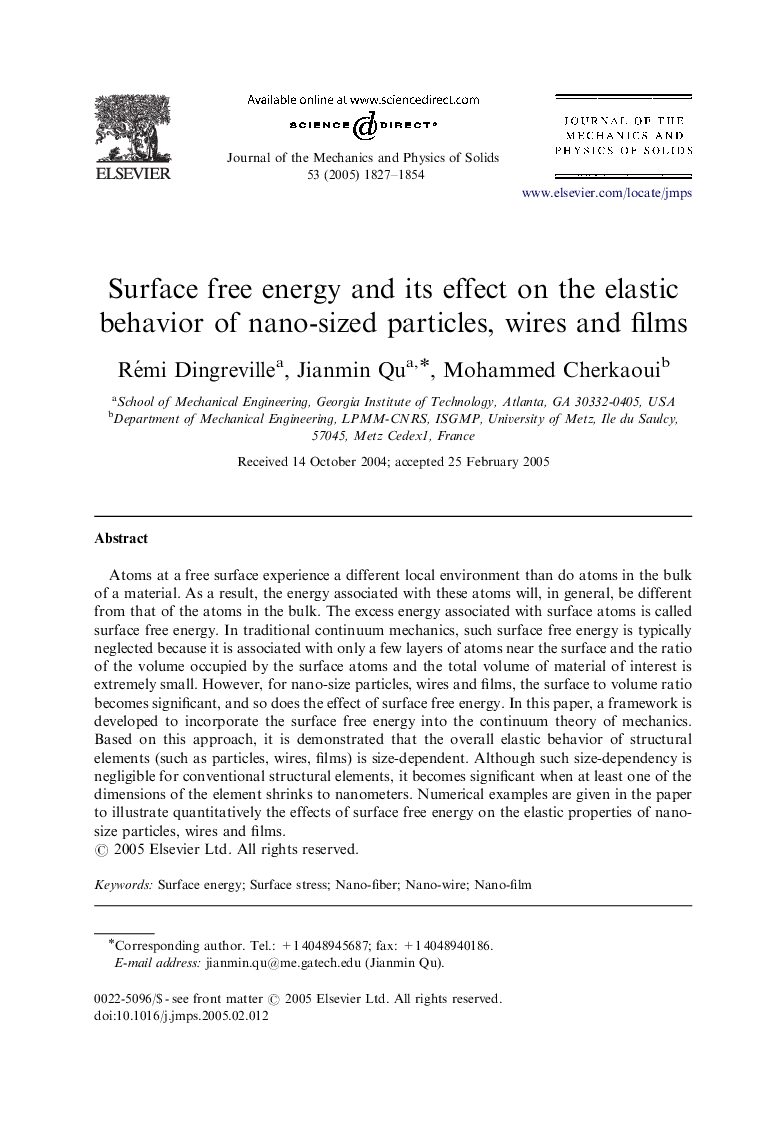| Article ID | Journal | Published Year | Pages | File Type |
|---|---|---|---|---|
| 9711168 | Journal of the Mechanics and Physics of Solids | 2005 | 28 Pages |
Abstract
Atoms at a free surface experience a different local environment than do atoms in the bulk of a material. As a result, the energy associated with these atoms will, in general, be different from that of the atoms in the bulk. The excess energy associated with surface atoms is called surface free energy. In traditional continuum mechanics, such surface free energy is typically neglected because it is associated with only a few layers of atoms near the surface and the ratio of the volume occupied by the surface atoms and the total volume of material of interest is extremely small. However, for nano-size particles, wires and films, the surface to volume ratio becomes significant, and so does the effect of surface free energy. In this paper, a framework is developed to incorporate the surface free energy into the continuum theory of mechanics. Based on this approach, it is demonstrated that the overall elastic behavior of structural elements (such as particles, wires, films) is size-dependent. Although such size-dependency is negligible for conventional structural elements, it becomes significant when at least one of the dimensions of the element shrinks to nanometers. Numerical examples are given in the paper to illustrate quantitatively the effects of surface free energy on the elastic properties of nano-size particles, wires and films.
Related Topics
Physical Sciences and Engineering
Engineering
Mechanical Engineering
Authors
Rémi Dingreville, Jianmin Qu, Mohammed Cherkaoui Mohammed Cherkaoui,
